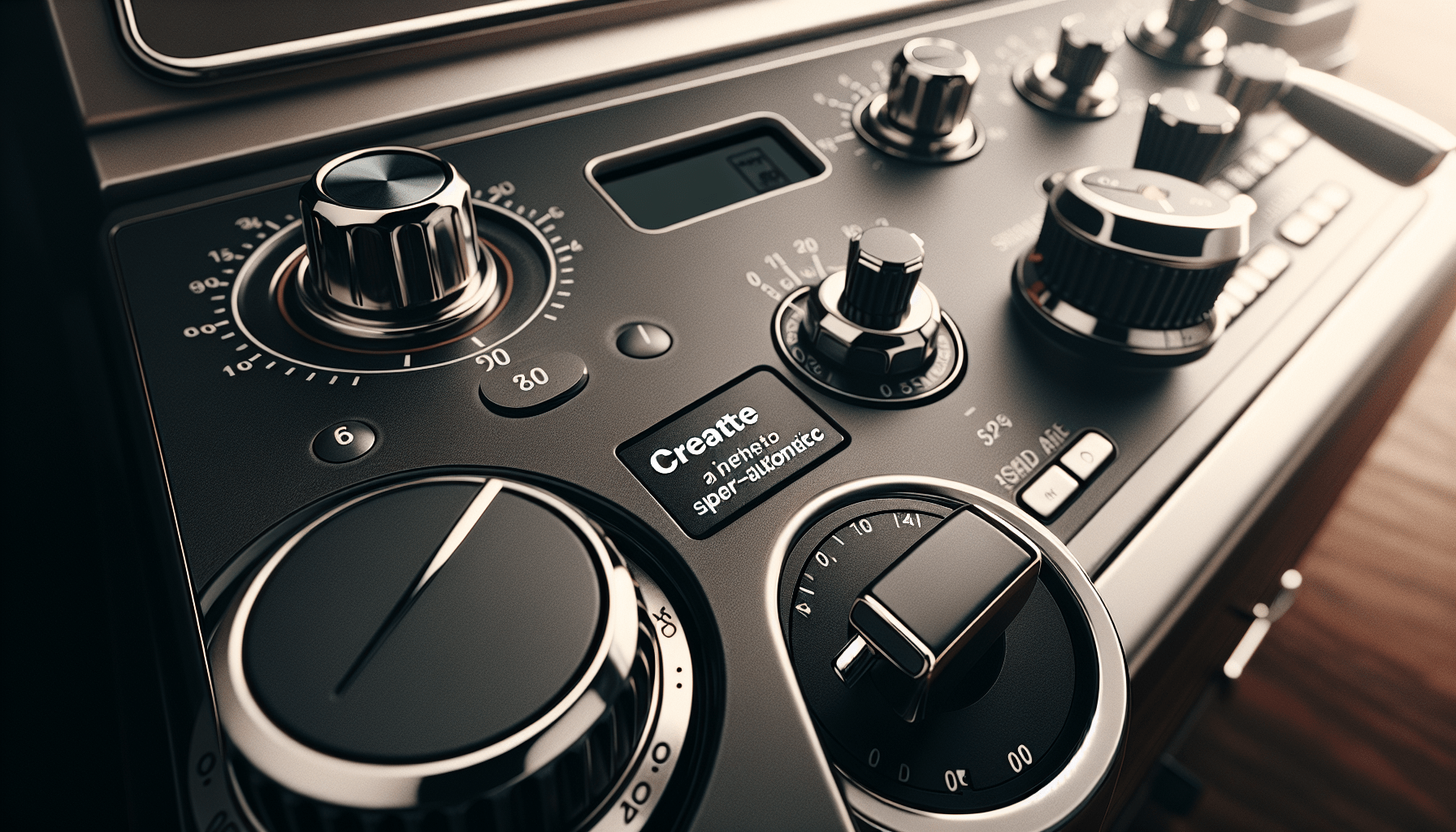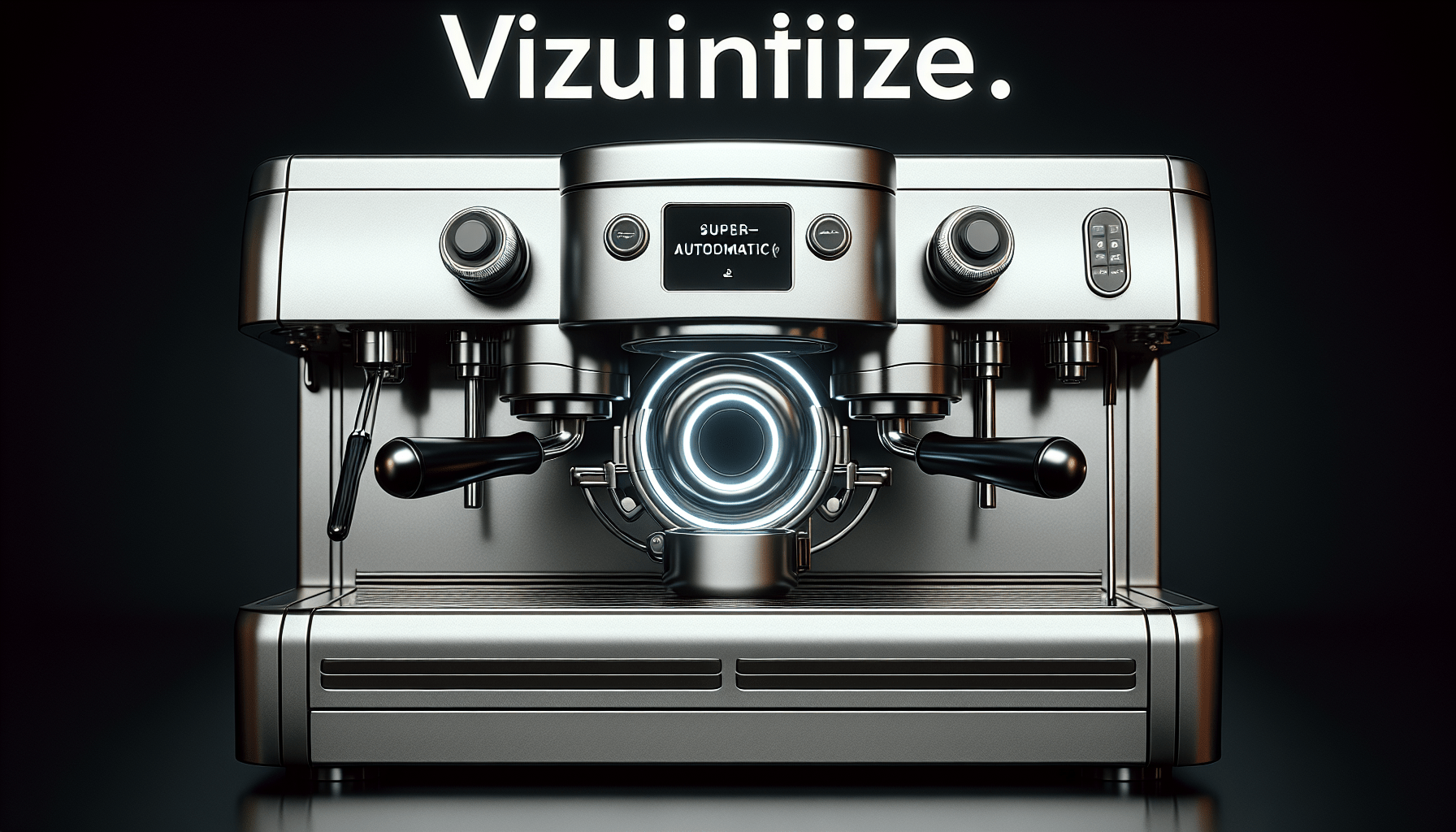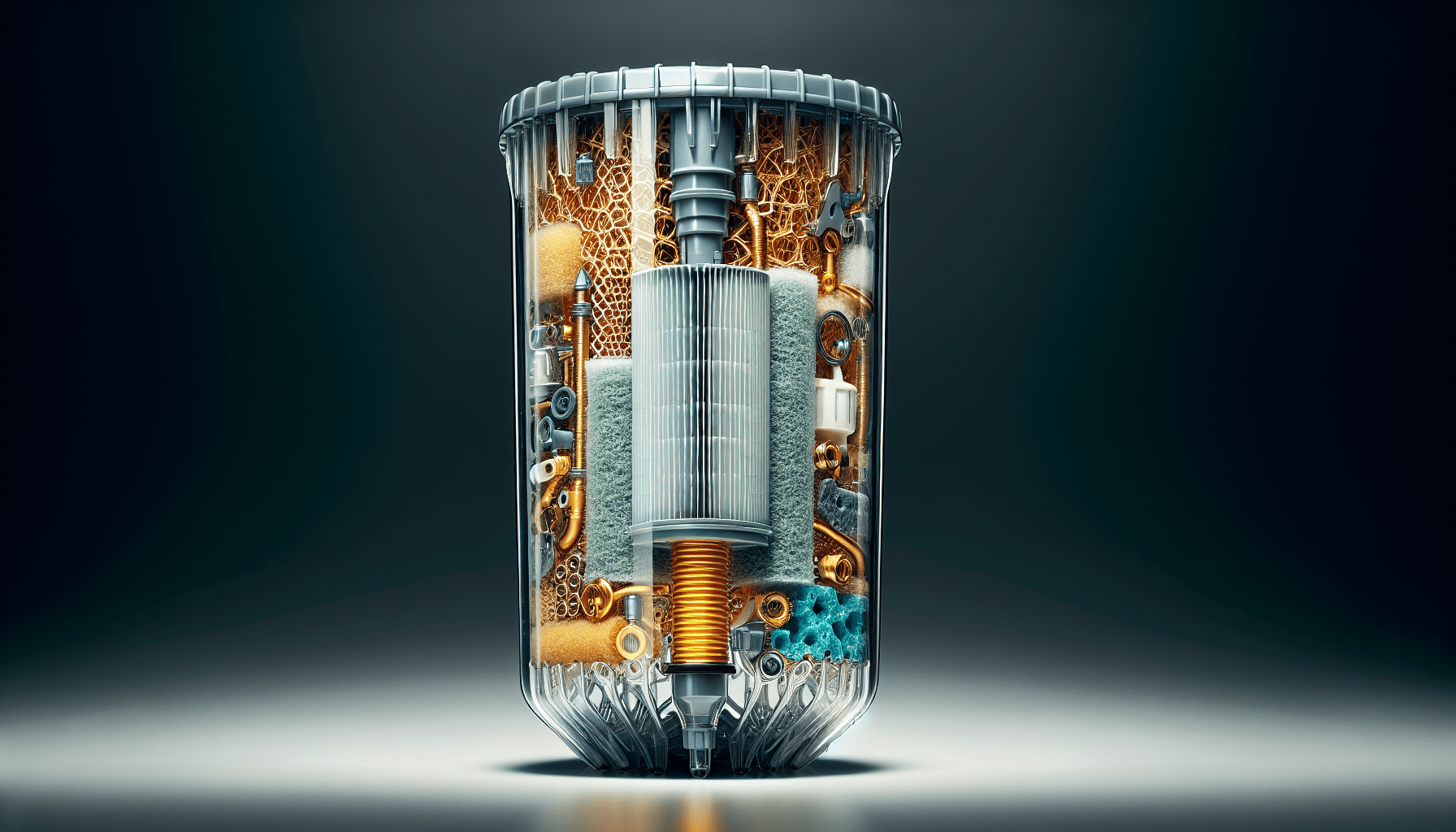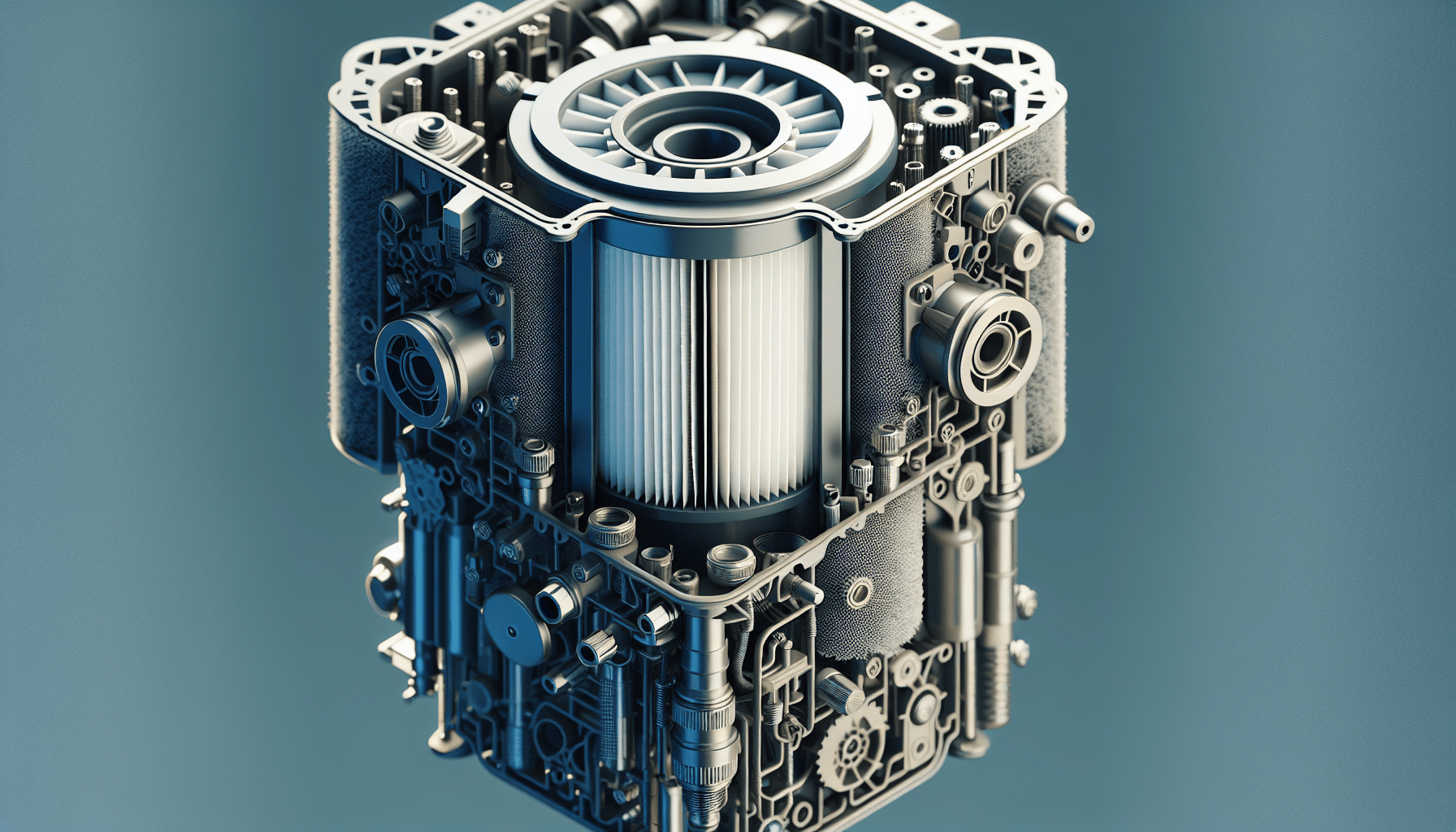When it comes to brewing the perfect cup of espresso, the world of super-automatic machines offers a myriad of possibilities. Whether you are an avid coffee lover or just starting to explore this aromatic beverage, understanding the various brewing parameters that can be adjusted on a super-automatic espresso machine is key to achieving that customized and delightful brew. From grind size and extraction time to temperature control and water volume, these adjustable parameters allow you to fine-tune your espresso experience to suit your preferences. So, grab your favorite mug and let’s dive into the world of super-automatic espresso machines and the exciting possibilities they offer.
Grind Size
Adjusting grind size
When it comes to making the perfect cup of espresso, one of the most important factors to consider is the grind size. The grind size refers to how finely or coarsely the coffee beans are ground. Adjusting the grind size on your super-automatic espresso machine allows you to customize the flavor and intensity of your coffee.
Most super-automatic espresso machines have a built-in grinder that offers a range of grind size options. By simply turning a dial or pressing a button, you can adjust the grind size to your preference. Finer grind sizes are typically used for stronger and more intense coffees, while coarser grind sizes are suitable for milder and lighter brews.
Impact on extraction
The grind size has a direct impact on the extraction process and ultimately affects the taste of your espresso. When hot water passes through the coffee grounds during extraction, it needs to extract the desirable flavors and compounds while avoiding over-extraction or under-extraction.
If the grind size is too coarse, the water may pass through the coffee too quickly, resulting in an under-extracted espresso that lacks flavor. On the other hand, if the grind size is too fine, the water may have difficulty passing through, leading to over-extraction and a bitter-tasting espresso.
By adjusting the grind size, you can control the rate at which the water interacts with the coffee grounds, allowing you to extract the optimal flavors and aromas.
Finding the right grind size
Finding the right grind size for your super-automatic espresso machine may require some trial and error. Start by experimenting with different grind sizes and tasting the resulting espresso. If the coffee tastes weak or sour, try using a finer grind size. If it tastes bitter or overpowering, consider using a coarser grind size.
It’s important to note that the ideal grind size may vary depending on the type of coffee beans you are using, as well as personal preference. Different coffee varieties and roast levels may require slightly different grind settings to achieve the best results.
Take the time to explore the different grind size options available on your super-automatic espresso machine and make adjustments until you find the perfect balance that suits your taste buds.
Coffee Dosage
Changing the amount of coffee
Adjusting the coffee dosage is another brewing parameter that can significantly impact the strength and flavor of your espresso. The coffee dosage refers to the amount of ground coffee used to make a single shot of espresso.
Most super-automatic espresso machines allow you to adjust the coffee dosage by either changing the amount of coffee the machine dispenses or by altering the coffee-to-water ratio. By increasing the dosage, you can achieve a stronger and more robust espresso, while decreasing the dosage will result in a milder and less intense cup.
Effects on strength and flavor
Changing the coffee dosage can have a profound effect on the strength and flavor profile of your espresso. Increasing the dosage will result in a higher concentration of coffee solids and oils, leading to a more pronounced flavor and a stronger caffeine kick.
Conversely, reducing the dosage will result in a lighter and more delicate espresso. This can be particularly appealing for those who prefer a milder taste or want to balance out the flavors with milk or sweeteners.
Determining the ideal dosage
Determining the ideal coffee dosage for your super-automatic espresso machine depends on your personal preferences and the specific coffee beans you are using. Start by following the manufacturer’s recommendations for the initial dosage and then make adjustments according to your taste.
If you find that the espresso is too weak or lacks flavor, try increasing the dosage by small increments. On the other hand, if the espresso tastes too strong or overpowering, decrease the dosage gradually until you achieve the desired balance.
Keep in mind that different coffee beans may require different dosages to achieve the best results. Experiment with various dosage settings, take notes on the flavor and strength of each cup, and refine your technique until you find the perfect dosage that suits your taste buds.
Water Temperature
Modifying water temperature settings
Water temperature is a critical factor in brewing espresso, as it directly affects the extraction process and the resulting flavors. Most super-automatic espresso machines provide the option to modify the water temperature settings, ensuring you can achieve the optimal temperature for brewing your perfect cup of coffee.
To adjust the water temperature on your machine, refer to the manufacturer’s instructions, as the process may vary depending on the model. Generally, you can make temperature adjustments through the machine’s settings menu or by pressing dedicated buttons.
Influence on extraction
The water temperature plays a vital role in ensuring the proper extraction of the coffee grounds. When hot water comes into contact with the coffee, it triggers the extraction of various flavors and compounds.
If the water temperature is too low, the extraction process may be incomplete, resulting in an underwhelming cup of coffee. On the other hand, if the water temperature is too high, it can lead to over-extraction and the extraction of unwanted bitter compounds.
By adjusting the water temperature, you can control the extraction process and maximize the extraction of desirable flavors while avoiding undesirable bitterness.
Achieving optimal temperature
The optimal brewing temperature for espresso generally falls within the range of 195°F to 205°F (90°C to 96°C). However, the ideal temperature may vary depending on the specific coffee beans you are using, as well as personal preference.
For a starting point, set the water temperature to around 200°F (93°C) and brew an espresso. Taste the resulting cup and assess if it is too weak or too strong. If necessary, make small adjustments to the temperature settings, increasing or decreasing by a few degrees, and continue testing until you achieve the desired flavor profile.
Experimenting with different water temperature settings will help you find the ideal balance between extracting the coffee’s flavors and avoiding any unwanted bitterness.
Pre-Infusion Time
Adjusting pre-infusion duration
Pre-infusion is a process that involves saturating the coffee grounds with hot water before the full extraction begins. It allows the coffee to bloom and release its flavors, contributing to a more balanced and nuanced cup of espresso. With a super-automatic espresso machine, you can adjust the pre-infusion duration to further fine-tune the taste of your coffee.
The pre-infusion duration refers to the amount of time the water is in contact with the coffee grounds before the extraction process begins in full force. By extending or reducing this duration, you can influence the extraction and flavor profile of the espresso.
Most super-automatic machines have customizable pre-infusion settings that allow you to adjust the duration to your liking. Refer to the machine’s manual or menu settings to make the necessary adjustments.
Effects on flavors and aromas
The pre-infusion process has a significant impact on the extraction of the coffee’s flavors and aromas. By allowing the coffee grounds to bloom and release their natural oils, pre-infusion contributes to a more even extraction and enhances the complexity of the resulting espresso.
If the pre-infusion duration is too short, the coffee may not have enough time to bloom fully, potentially leading to an under-extracted espresso with a flat flavor profile. Conversely, an excessively long pre-infusion duration may result in over-extraction and an overly bitter or astringent taste.
Ideal pre-infusion time
The ideal pre-infusion time varies depending on factors such as the specific coffee beans, roast level, and personal preference. However, a good starting point is around 5 to 10 seconds.
Start by setting the pre-infusion duration within this range and brew a sample espresso. Taste the espresso and determine if it meets your desired flavor profile. If the coffee lacks complexity or tastes weak, consider extending the pre-infusion time by a few seconds. On the other hand, if the espresso is too intense or bitter, try reducing the pre-infusion duration slightly.
Continue fine-tuning the pre-infusion duration, making adjustments based on your taste preferences, until you achieve a balanced and flavorful cup of espresso.
Extraction Time
Controlling extraction time
The extraction time refers to the duration it takes for the water to pass through the coffee grounds during the brewing process. This parameter significantly influences the taste and body of your espresso. With a super-automatic espresso machine, you can control and adjust the extraction time to customize your coffee’s flavor profile.
To control the extraction time, refer to your machine’s settings or menu options and make the necessary adjustments. Most super-automatic machines allow you to adjust the extraction time either by increasing or decreasing the flow rate of the water.
Impacts on taste and body
The extraction time directly affects the taste and body of your espresso. When the water flows through the coffee grounds for an extended period, it extracts more flavors and compounds, resulting in a stronger and more intense cup of coffee.
A shorter extraction time, on the other hand, produces a milder and less concentrated espresso. This may be desirable for those who prefer a lighter taste or want to balance the coffee flavors with milk or sweeteners.
Balancing extraction time
Achieving the perfect extraction time can be a delicate balancing act. While longer extraction times may extract more flavors, too much extraction can lead to bitterness and unwanted compounds. Conversely, shorter extraction times may not extract enough flavors and result in a weak or underwhelming espresso.
To find the optimal extraction time for your espresso, start by following the manufacturer’s recommended guidelines and making small adjustments based on taste. Brew an espresso using the default extraction time and evaluate the results. If the coffee tastes under-extracted or lacks complexity, consider increasing the extraction time. If it tastes over-extracted or bitter, try reducing the extraction time slightly.
Continue experimenting and fine-tuning the extraction time until you achieve a well-balanced and flavorful cup of espresso that suits your taste preferences.
Brewing Pressure
Changing brewing pressure
Brewing pressure refers to the force exerted by the espresso machine’s pump as it pushes hot water through the coffee grounds during extraction. The brewing pressure is a crucial parameter that can greatly influence the extraction process and the taste of your espresso.
Super-automatic espresso machines generally have adjustable brewing pressure settings that allow you to modify the intensity of your brew. You can typically adjust the brewing pressure through the machine’s settings or by using dedicated buttons on the control panel.
Effects on extraction
The brewing pressure directly impacts the extraction process, influencing the rate at which water interacts with the coffee grounds. Adjusting the brewing pressure can affect factors such as the extraction rate, the crema production, and the overall flavor profile of the espresso.
Higher brewing pressures, such as 9 bar (130 psi), are commonly used to extract the fullest flavors from the coffee grounds. This typically results in a rich and robust cup of espresso with a thick and creamy crema. Lower brewing pressures, around 6 to 7 bar (87 to 101 psi), may produce a milder and less concentrated espresso with a thinner crema.
Optimizing pressure
Optimizing the brewing pressure for your espresso machine may require some experimentation. Start by brewing a sample espresso using the default pressure settings and tasting the results. Assess the flavor, body, and crema produced.
If you find that the espresso lacks intensity or crema, consider increasing the brewing pressure to maximize the extraction. On the other hand, if the espresso tastes bitter or overpowering, try reducing the brewing pressure for a milder and more balanced cup.
It’s important to note that the ideal brewing pressure may vary depending on factors such as the specific coffee beans, roast level, and personal preference. Experiment with different brewing pressure settings, make note of the flavors and crema produced by each, and refine your techniques until you achieve the perfect brewing pressure that suits your taste buds.
Milk Frothing
Adjusting milk frothing parameters
Many super-automatic espresso machines come equipped with milk frothing capabilities, allowing you to create delicious milk-based beverages like cappuccinos and lattes. Adjusting the milk frothing parameters on your machine gives you control over the texture and taste of the milk foam.
To adjust the milk frothing parameters, refer to your machine’s settings or menu options. Most super-automatic machines offer the ability to modify factors such as the amount of foam produced, the temperature of the milk, and the frothing technique.
Influence on texture and taste
The milk frothing parameters play a significant role in determining the texture and taste of the milk foam. By adjusting these parameters, you can achieve the desired level of creaminess, thickness, and temperature in the milk foam.
Increasing the amount of foam produced will result in a thicker and more voluminous foam, perfect for cappuccinos. Conversely, reducing the amount of foam will result in a smoother and creamier texture, ideal for lattes.
The temperature of the milk also affects the taste and mouthfeel of your beverage. Warmer milk tends to have a more rounded and rich flavor, while cooler milk can enhance the sweetness of the espresso and provide a refreshing contrast.
Perfecting milk frothing
Perfecting the milk frothing process may require some practice and experimentation. Start by adjusting the parameters to the manufacturer’s recommended settings and froth a small amount of milk. Assess the texture, thickness, and temperature of the milk foam.
If the foam is too thin or lacks volume, consider increasing the amount of foam produced or modifying the frothing technique. If the foam is too thick or overwhelming, reduce the amount of foam or adjust the frothing technique to achieve a smoother texture.
In terms of temperature, experiment with different settings until you find the perfect balance that complements the flavors of your espresso and suits your preference.
Take the time to practice and refine your milk frothing technique. With patience and experimentation, you’ll soon be creating professional-quality milk-based beverages with a texture and taste that rival your favorite café.
Cup Size
Modifying cup size settings
Super-automatic espresso machines typically offer the flexibility to customize the size of the espresso shot to suit individual preferences. Modifying the cup size settings allows you to control the amount of espresso extracted and tailor it to your desired strength and volume.
To adjust the cup size on your machine, refer to the manufacturer’s instructions. Most super-automatic machines have a menu or settings option where you can select the desired cup size.
Overcoming limitations
Modifying the cup size setting can help overcome some of the limitations of a standard espresso shot. While traditional espresso shots are small in volume, customization options allow you to extract a larger, more satisfying amount of espresso.
By increasing the cup size, you can extract a larger volume of espresso without sacrificing the strength and flavor of the brew. This is particularly useful if you prefer a more substantial cup of coffee or if you plan to use the espresso as a base for other beverages like lattes or Americanos.
Choosing the right cup size
Choosing the appropriate cup size for your espresso depends on personal preference and the type of coffee beverage you are creating. Start by experimenting with different cup size settings and make note of the resulting taste and volume.
If the espresso tastes too strong or concentrated, consider increasing the cup size to dilute the strength. On the other hand, if the espresso tastes weak, try reducing the cup size to achieve a more concentrated and flavorful shot.
Keep in mind that larger cup sizes may require adjustments to other brewing parameters, such as the grind size and extraction time, to maintain the desired strength and intensity. Experimentation and finding the perfect cup size will allow you to enjoy a personalized espresso experience tailored to your taste.
Hot Water Dispensing
Adjusting hot water dispensing
In addition to brewing espresso, super-automatic espresso machines often provide the option to dispense hot water. This feature allows you to use your machine beyond espresso and expand your brewing repertoire. Adjusting the hot water dispensing option allows you to control the temperature and flow rate of the water for various purposes.
To adjust the hot water dispensing settings, refer to your machine’s menu or settings options. Most super-automatic machines have dedicated buttons or menus for hot water dispensing.
Usage beyond espresso
Hot water dispensing opens up a world of brewing possibilities beyond espresso. You can use the hot water to brew tea, prepare hot chocolate, or create other hot beverages. Additionally, hot water dispensing is useful for preheating cups and cleaning the machine.
By adjusting the temperature and flow rate of the hot water, you can achieve the desired results for different brewing purposes. For example, hotter water is often preferred for brewing black tea, while slightly cooler water may be ideal for delicate green teas.
Temperature control considerations
Controlling the temperature of the hot water is crucial for achieving optimal brew results. Different beverages require specific water temperatures to extract the desired flavors and avoid any unwanted bitterness or astringency.
Refer to temperature guidelines for the specific beverage or tea you intend to brew and adjust the hot water dispensing settings accordingly. Experiment with different temperature settings and taste the results to find the ideal balance that complements your beverage of choice.
It’s worth noting that temperature settings may also need to be adjusted based on personal preference. Some individuals may prefer slightly hotter or cooler water for their favorite beverage. Take the time to experiment and find the temperature that satisfies your taste buds.
Cleaning and Maintenance
Routine cleaning tasks
Proper cleaning and maintenance of your super-automatic espresso machine are essential for ensuring its longevity and the quality of your coffee. Regular cleaning tasks help prevent the build-up of coffee residues, oils, and minerals that can affect the machine’s performance and the taste of your espresso.
Routine cleaning tasks include emptying and rinsing the coffee dregs drawer, cleaning the brew group, decalcifying the machine, and wiping down the exterior surfaces. Refer to your machine’s manual for specific cleaning instructions and recommended frequencies for each task.
Regular cleaning not only keeps your machine running smoothly but also ensures that your espressos taste consistently delicious.
Maintenance tips and guidelines
In addition to routine cleaning tasks, there are several maintenance tips and guidelines to follow to maximize the lifespan of your super-automatic espresso machine.
One important aspect is descaling the machine regularly to remove any mineral deposits that may accumulate over time. The frequency of descaling depends on the hardness of your water, so refer to your machine’s manual for specific recommendations.
It is also important to lubricate any moving parts and gaskets as instructed by the manufacturer. This helps prevent friction and wear that may lead to leaks or malfunctions.
Another crucial aspect of maintenance is keeping the water reservoir clean and ensuring that it is always filled with fresh, filtered water. This helps prevent the build-up of bacteria or impurities that can affect the taste and quality of your espresso.
Lastly, make sure to use high-quality coffee beans and perform regular maintenance checks to ensure that all components are functioning correctly.
By following these maintenance tips and guidelines, you can enjoy a well-performing super-automatic espresso machine and consistently delicious espressos for years to come.
In conclusion, adjusting various brewing parameters on your super-automatic espresso machine allows you to customize your coffee experience and achieve the perfect cup of espresso. By exploring and fine-tuning parameters such as grind size, coffee dosage, water temperature, pre-infusion time, extraction time, brewing pressure, milk frothing, cup size, hot water dispensing, and practicing proper cleaning and maintenance, you can elevate your espresso brewing skills to new heights. Experiment, take note of the results, and most importantly, enjoy the process of creating your personalized cup of espresso. Cheers!




